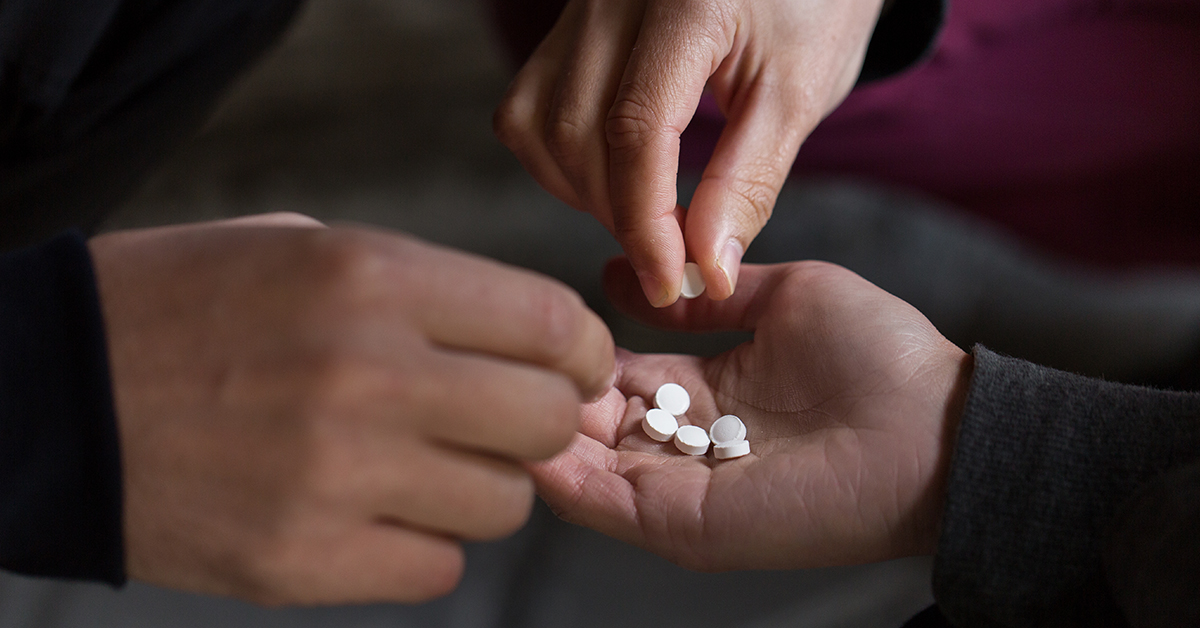
06 Jan How to Tell if Your Kid is Abusing Xanax
Table of Content
Heralded the world over as anxiety’s most prescribed inhibitor, Xanax poses a huge threat to those who use it for recreational purposes. As a suppressor of anxiety and panic disorders, this benzodiazepine (street named “benzo”) slows down brain activity and calms its users to the point that they will no longer feel the symptoms of their disorders. Where’s the danger in that, you ask. Well, when combined with alcohol or opioids Xanax creates a deadly sedative cocktail that can stop the heart from beating, arrest neural activity and slow breathing to the point of death. Needless to say, the recreational use of this widely prescribed medication represents an existential threat to the safety of our children and families. But how can you tell if your kid is abusing Xanax? What are the signs and symptoms of its use? And, most importantly, how can we stop our children from abusing this highly volatile, addictive medication before the worst happens?
What is Xanax?
To understand the recreational temptation of Xanax you have to understand its intended use. Xanax is the brand name for the synthetic drug alprazolam, developed in the 1960s as a safer alternative for the predominating anti-anxiety barbiturates on the market at the time. It wasn’t until the pharmaceutical boom of the 80s and 90s that Xanax began to yield the deadly results that it is so widely known for today. Then, as now, the danger this highly addictive drug posed was either downplayed or ignored as prescriptions flooded out and money rolled in. These days over 50 million prescriptions are written for Xanax every year in the United States, making it one of the most widely used (and thus easily acquired and abused) prescription medications available today.

When ingested the drug stimulates the release of the neurotransmitter GABA (gamma-aminobutyric acid) into nervous system. GABA is an inhibitory neurotransmitter that helps regulate mood and stabilize brain chemistry. This in turn has a sedative effect on the mind, keeping brain function to minimal levels and suppressing other neurotransmitters that cause the familiar feelings of anxiety and panic. When those who have not been diagnosed with anxiety disorder abuse Xanax the brain can come to rely entirely on the drug for normal GABA release. This can and will result in a physical dependence.
Recreational Abuse of Xanax
Recreational abuse of Xanax is very common in today’s society and is not just limited to teens or young adults. The practice of self-medication is a driving force in America’s black market, and it is not a strange occurrence for everyday people to purchase Xanax illegally in order to “cope” with those tough days at work or stressful situations at home. However, like other illegally acquired prescription medications, many abuse Xanax in combine with other substances in an effort to achieve a certain level of intoxication otherwise unattainable. For example: when ingested together, alcohol and Xanax put the abuser rapidly into a sort of fugue state, characterized by feelings of mental satisfaction and physical lethargy (loss of motor control and memory are the unintended, often forgotten side effects). The sedative nature of both substances working in concert can also lead to a rapid slowdown of respiratory and neural function—though this is, once again, not the intention of the user. Another distinguishing side effect is that the victim will often forget how much Xanax they have taken due to the drug and alcohol’s effect of neural activity. This can cause the abuser to dose themselves again and again, forgetting they have done so and thus, potentially resulting in overdose.
If your kid is abusing Xanax, you may or may not be able to tell based off of their behavior at home. The fact is that, more often than not, recreational use of Xanax is done away from the prying eyes of parents and authority figures. If your child has a prescription for Xanax then it is a reasonable expectation that they may be tempted at some point to either use the drug recreationally or provide it for another’s use. This does not mean that they will do so, or that every child with a prescription for Xanax is a potential dealer. It simply means that the appetite for the drug and the culture of abuse that surrounds it has grown rapidly in today’s society, bordering on tacit acceptance. In order to tell if your kid is abusing Xanax or selling it to others there are behavioral and cultural signs that you should be looking out for.
Behavioral Signs of Xanax Abuse
The behavioral signs of a Xanax abuser are often mistaken for teenage moodiness or laziness. This can make it extremely difficult for parents to gauge whether their kid is abusing Xanax or just displaying the common characteristics of adolescents. Taking a deeper look into how they react to certain situations, as well as keeping track of their shifts in mood, can go a long way towards revealing whether or not they are abusing this drug. The following signs should be looked out for and duly considered if you suspect there is a problem…
Loss of coordination and cognitive function: Since Xanax actively works to dull neural activity; a lack of cognitive ability and motor functionality can be expected in those who abuse the drug. This may seem like a very obvious sign, but can be mistaken or disguised as the result of any number of conditions and environmental factors. If your child is having trouble holding a conversation, recalling past or recent memories or has difficulty speaking then they very well may be abusing Xanax. Similarly, if they are coming home from nights out with bruises, scratches or torn clothing, they may be suffering from the characteristic clumsiness of a Xanax abuser. A notable loss of motor control while under the influence of Xanax is common and can result in a plethora of accidental injuries.
Depression: The sedative nature of the drug and its over-release of the GABA neurotransmitters can leave the abuser feeling sapped of energy and saddened after prolonged use. Depression is characterized by consistent low mood as a result of a lack of dopamine and other neurotransmitters in the nervous system. Since GABA blocks the release of many of these neurotransmitters, it is no surprise that their absence will cause depression. If you suspect that your child is suffering depression (even if it is not the result of Xanax abuse) contact your doctor straight away. Depression is the leading cause of suicide in the world and should be taken extremely seriously.

Sporadic episodes of anxiousness: Xanax’s takeover of our natural GABA release process can sap your child’s brain of this all-important neurotransmitter. This can lead to unregulated neural activity resulting in extreme anxiousness when Xanax is no longer in their system. Between bouts of Xanax abuse, they will become easily overwhelmed and irritable. This may be mistaken as a common side effect of the teenage experience but, when taken in concert with other signifiers, can paint a vivid picture of someone suffering from drug abuse.
Extreme drunkenness: The reality of today’s teenage experience is that drinking alcohol is still very much in vogue. This is a problem all its own, but when combined with Xanax it becomes a veritable plague on our teenage population. If you catch your teenager drunk to the point of stumbling, especially after they have only imbibed a few drinks, then Xanax may be their chosen chaser. Supervising your kid’s drinking habits may prove difficult but having earnest and truthful conversations with them and their friends can help you glean the information you need in order to tell if they are abusing Xanax. Once again, Xanax in combine with alcohol can result in a nearly catatonic level of drunkenness (even after just one or two drinks). Slurred speech, difficulty keeping their eyes open and an extreme lack of balance are common characteristics. If you come across such behaviors, you may be tempted to chalk it up to over-drinking, but a good way of determining if Xanax was involved is to see how hung over they are the next day. If the severity of their hangover does not match the level of their drunkenness, then there is a good chance that they weren’t overindulging in alcohol, but were, in fact, combining Xanax with a few drinks.
Refilling their prescription often: If your child has a prescription for Xanax then they will already understand its importance to their continued ability to function in society. The ability to relieve the symptoms of anxiety is a huge boon to those who suffer its wrath and live in fear of impending panic attacks. Xanax, for all its ills, accomplishes this task with proficiency and will inevitably be held in strong regard by those who require it. However, though some days are worse than others, pills do not just disappear. If you see that your child is running out of Xanax more quickly than they used to then there is a strong possibility that they are abusing or selling it.
Cultural Signs of Xanax Abuse
For those whose children do not have a prescription for Xanax it may be important at this point to share some of the defining characteristics of the drug, as well as explore the culture that has sprang up around its abuse. Xanax is commonly found in two forms, both of which have specific street names. “Bars” (Xanny-bars, planks, school bus) are 2.0 mg pills that are yellow in color and are manufactured with indents along their long surface area so that they may be cut into fourths. “Footballs” are oblong in shape and come in 0.25, 0.5 and 1.0 mg doses, colored white, orange and blue respectively. Both “bars” and “footballs” will have the dosage amount and “Xanax” brand name imprinted on their surface. There are off-brand and street-made examples of the drug, but these will always closely mimic the shape and color patterns of the original product. If you see such pills in your child’s possession then take action. There is always the possibility that you are wrong and that the pill may be some other form of medication that is totally innocuous, but the risks involved are far too high to leave the question up in the air. After all, people are dying from Xanax abuse, even though the acceptance of this drug and its general use has never been more prevalent.
A cultural shift has occurred in the United States when it comes to prescription drugs. Alongside the massive boom in prescription drug sales and the growing acceptance of self-medicating culture, there has been a corresponding desire by those who abuse Xanax to show allegiance to their drug in the same way many people who use marijuana do. Famous singers drop albums full of lyrics about Xanax and its high, while T-shirts, jewelry and ball caps, all are now available bearing the language and branding that one would usually expect only from beer companies. A notable piece of paraphernalia on the market today is a golden Xanax bar necklace available in 14 carats and bearing the inscription “Family” on one side so that you as a parent never have to see the “Xanax” imprinted on the other. This is the stuff of nightmares for many of us with children. That the obsession with a prescription drug has gone so far that we may purchase jewelry bearing its name, tells a tale that surely doesn’t end well. This strange culture of Xanax acceptance and abuse did not spring up overnight. It has been steadily growing since the days of “mother’s little helper”. If you see any paraphernalia bearing the name of Xanax and its street names or mimicking the shape of its pills, then there is a very good chance that your child is abusing Xanax.
Conclusion
Xanax abuse poses a real threat to our children and their wellbeing. It may take effort to tell if your kid is abusing Xanax, but it will be worthwhile. This drug, unless properly prescribed and administered, can end lives and ruin families. If you suspect that your child is abusing Xanax then seek help immediately.
Sources:
“Xanax Symptoms and Warning Signs.” Addiction Center. 8 Mar. 2019. https://www.addictioncenter.com/benzodiazepines/xanax/symptoms-signs/
“5 Signs Your Loved One Is Addicted To Xanax.” The Treehouse. 9 Mar. 2018. 9 Mar. 2019. https://www.treehouserehab.org/5-signs-xanax-addiction/
“Xanax.” Drugfree.org. 8 Mar. 2019. https://drugfree.org/drug/xanax/



 678-771-6411
678-771-6411


No Comments